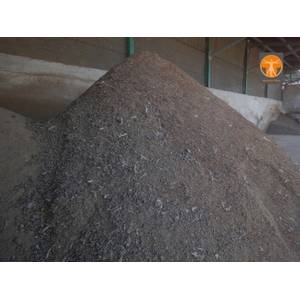Chicken manure is an important raw material in mushroom compost and for the composter as it is the biggest source of nitrogen. It is therefore vital to keep the quality as consistent and as high as possible. However, the quality of chicken manure is unimportant for the farmer, for him it is a waste product. So make sure you always pay attention to the following points yourself.
– a nitrogen content (N) of 3.5 to 4%. The higher, the better;
– a moisture content between 20 and 50%.
The majority of composters work with dry chicken manure. The most suitable type is manure from broilers. This contains a higher percentage of actual manure compared to the rest of the constituents such as sawdust.
One of the main aims of composting is to create homogenous compost: ensuring that you always supply growers with the same quality of spawnable or incubated compost. This process starts with selecting your suppliers, including the ones who provide you with chicken manure. Always work with the same chicken farmer, who keeps his birds in the same way. If you do not have a regular supplier, then you will have to compensate for the differences in the chicken manure.
Even if you do use a regular supplier, analysing the nitrogen and moisture content in the manure remains essential, even though the results of the analysis are usually the same readings. If the birds are sent to slaughter earlier or later than usual, there will be a direct influence on the nitrogen content. You won’t see it visibly in the manure, but it will appear in the analysis. Using the wrong recipe to blend the compost has immediate and far-reaching consequences for your mushroom production. You won’t be the first person to have two weeks of bad production….
Distributing the chicken manure over straw can only be done well once. The blending done afterwards will not compensate for any bad initial mixing. Every single blade of straw must come into contact with the manure. You must avoid any large lumps of chicken manure ending up in the compost.
Bron: Mushroom Blog – Mark den Ouden

Copyright © 2024 – All rights reserved
This website uses cookies to ensure you get the best experience on our website.